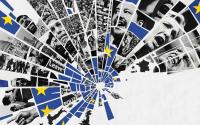18 June 2008Tom Simonite
A crackly analogue recording made in 1951 is the earliest known example of a digital computer making music, say UK historians.
The recording captures one of the earliest computers to use short term random access memory playing God Save the King, Baa Baa Black Sheep and a short piece of Glenn Miller's In The Mood.
The Ferranti Mark 1 computer was built by UK electrical engineering firm Ferranti in collaboration with Manchester University, UK. It was the world's first commercial computer, and nine were sold between 1951 and 1957.
In 1951 the BBC recorded a musical performance by the machine for a children's radio show and also presented someone there with a private copy on an acetate disk. It is that disk that has now surfaced in the Computer Conservation Society's archives.
Listen to an mp3 file of the recording
Supersonic tone
"I heard this performance at the time it happened," Geoff Tootill, an engineer who helped design the computer, told New Scientist.
A loudspeaker was attached to the computer to let its operators monitor key progress by listening, allowing them to do other activities at the same time. "It was programmed to make a short click every time an instruction was completed," Tootill explains.
"These days that would be an [ultrasonic] tone," says Tootill, because modern computers process instructions so quickly.
Once the Mark 1 finished a program, it would also produce a characteristic tone to alert the operators.
The music played by the computer was encoded in a program written by Chris Strachey, a friend of computer science pioneer Alan Turing. Turing wrote the first manual for the Mark 1 (see a copy of the manual) and sent a copy to Strachey, who wrote several programs for the Manchester machine to try out.
After feeding his programs into the machine on punched tape, "one of them, to our surprise, played music," says Tootill.
The Ferranti Mark 1 was not the first digital computer to play music, but no earlier recordings are known to exist, says the Computer Conservation Society. Australia's first digital computer, CSIRAC, is thought to have played music a few weeks before the recording of the Mark 1 was made, but sadly no recording has yet been found.






